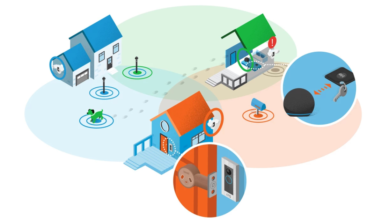What is Web Development and How Does It Work?

In today’s digital age, the internet is an integral part of our lives. From social networking to online shopping, everything we do on the web is made possible by a complex process known as web development. In this comprehensive guide, we will explore what web development is and how it works. We will delve into the intricacies of web development, the technologies involved, and its role in creating the websites and web applications we use every day.
Web development is the process of creating, designing, and maintaining websites and web applications that we access through the internet. It involves a combination of programming, coding, and designing to bring a website to life. Web development encompasses everything from the simplest static web pages to complex dynamic web applications.
Understanding Web Development
Web development can be divided into two main categories: front-end development and back-end development. Front-end development focuses on the user interface and the visual aspects of a website, while back-end development deals with the server-side functionality and database management.
Key Components of Web Development
Front-End Development
Front-end developers are responsible for creating the layout, design, and interactivity of a website. They use languages such as HTML (Hypertext Markup Language), CSS (Cascading Style Sheets), and JavaScript to build the user interface and ensure a seamless user experience.
Back-End Development
Back-end developers work behind the scenes to make sure that the website’s server runs smoothly. They handle server-side scripting, database management, and server optimization. Popular back-end languages include PHP, Python, and Ruby.
Full-Stack Development
Full-stack developers are proficient in both front-end and back-end development. They can work on all aspects of web development, making them versatile and highly sought after in the industry.
Read More: How to Optimize Your Website for Googles Featured Snippets
Web Development Technologies
HTML
HTML is the foundation of web development. It is a markup language that defines the structure and content of a web page. HTML tags are used to create headings, paragraphs, images, links, and more.
CSS
CSS is used to style web pages and make them visually appealing. It controls the layout, colors, fonts, and positioning of elements on a webpage.
JavaScript
JavaScript is a programming language that adds interactivity to web pages. It allows developers to create dynamic features like sliders, forms, and interactive menus.
The Web Development Process
Web development follows a systematic process that includes planning, design, development, testing, and deployment. Planning involves defining the project’s goals and requirements, while design focuses on creating the website’s visual elements. Development involves writing the code, testing ensures the website functions correctly, and deployment makes it accessible to users.
Importance of Responsive Design
With the increasing use of mobile devices, responsive design has become crucial in web development. Responsive websites adapt to different screen sizes, ensuring a consistent user experience across devices.
Web Development Frameworks
Web development frameworks like Bootstrap, React, and Angular provide pre-built templates and tools that streamline the development process. They make it easier to create responsive and feature-rich websites.
Web Development Languages
Different programming languages are used in web development, each with its own strengths. PHP is widely used for server-side scripting, Python is known for its versatility, and Ruby is valued for its simplicity and elegance.
Content Management Systems (CMS)
Content Management Systems like WordPress, Drupal, and Joomla simplify website management. They offer user-friendly interfaces for creating and updating website content.
E-Commerce Development
E-commerce development refers to the process of creating online stores and platforms that enable businesses to sell products and services over the internet. In today’s digital age, e-commerce has become a vital part of the global economy, allowing companies to reach a broader audience and streamline their sales processes.
Key Elements of E-Commerce Development
- Online Storefront: An essential aspect of e-commerce development is the creation of an online storefront or website where customers can browse and purchase products or services. This storefront should have an appealing design, user-friendly navigation, and secure payment options.
- Product Catalog: E-commerce websites must have a well-organized product catalog that showcases available items. Each product should have detailed descriptions, high-quality images, and pricing information.
- Shopping Cart: A shopping cart is a crucial component of e-commerce development. It allows customers to select items, review their selections, and proceed to checkout. A smooth and intuitive shopping cart experience is essential for increasing conversions.
- Payment Processing: E-commerce websites must support various payment methods, including credit cards, digital wallets, and online payment gateways. Ensuring secure and seamless payment processing is vital for building customer trust.
- Inventory Management: Effective e-commerce development involves implementing inventory management systems to track product availability, restock items when necessary, and prevent overselling.
- Security: Security is a top priority in e-commerce development. Websites must use encryption and secure sockets layer (SSL) certificates to protect customer data, including payment information.
- User Accounts: E-commerce websites often require user accounts, allowing customers to save their information, track orders, and receive personalized recommendations. User account management is a critical aspect of e-commerce development.
- Mobile Optimization: With the increasing use of mobile devices for online shopping, e-commerce development should prioritize mobile optimization to ensure a seamless experience on smartphones and tablets.
- Search and Filters: Implementing robust search and filtering options on the website helps customers quickly find the products they’re looking for, enhancing the overall shopping experience.
- Shipping and Delivery: E-commerce development involves setting up shipping and delivery options, including calculating shipping costs, tracking orders, and providing estimated delivery times.
E-Commerce Platforms and Technologies
E-commerce development often relies on specialized platforms and technologies to simplify the process. Popular e-commerce platforms include Shopify, WooCommerce (for WordPress), Magento, and BigCommerce. These platforms offer pre-built templates, plugins, and features tailored to e-commerce needs.
Additionally, technologies like secure payment gateways, content management systems (CMS), and customer relationship management (CRM) systems play significant roles in successful e-commerce development.
Benefits of E-Commerce Development
E-commerce development offers numerous benefits for businesses:
- Global Reach: E-commerce enables businesses to reach customers worldwide, expanding their market reach beyond geographic boundaries.
- 24/7 Accessibility: Online stores are accessible 24/7, allowing customers to shop at their convenience, which can lead to increased sales.
- Reduced Overheads: E-commerce often requires fewer physical resources and staff compared to brick-and-mortar stores, resulting in cost savings.
- Data Analytics: E-commerce platforms provide valuable data and analytics that can help businesses make informed decisions and optimize their operations.
- Personalization: E-commerce websites can offer personalized product recommendations based on customer preferences and behavior, enhancing the shopping experience.
Security in Web Development
Security is paramount in web development. Developers must protect websites from hacking, data breaches, and other cyber threats. This involves implementing encryption, secure authentication, and regular security audits.
SEO and Web Development
Search Engine Optimization (SEO) is closely tied to web development. SEO practices ensure that websites rank well in search engine results, increasing their visibility to potential visitors.
Future Trends in Web Development
As technology evolves, web development continues to advance. Future trends may include the use of artificial intelligence, voice search optimization, and progressive web apps.
Read More: How to Optimize Your Website for Local SEO 2023
Conclusion
Web development is the backbone of the digital world, enabling the creation of websites and web applications that connect people, businesses, and information. Whether you’re a developer or a website owner, understanding web development is essential in today’s online landscape.
FAQS
What is the difference between front-end and back-end development?
Front-end development focuses on the user interface and design of a website, while back-end development deals with the server-side functionality and database management.
Which programming languages are commonly used in web development?
Commonly used programming languages in web development include HTML, CSS, JavaScript, PHP, Python, and Ruby, among others.
What is the role of responsive design in web development?
Responsive design ensures that websites adapt to different screen sizes and devices, providing a consistent and user-friendly experience for visitors.
How can I improve the security of my website?
To enhance website security, consider implementing encryption, strong authentication, regular security audits, and keeping all software and plugins up to date.
What are the emerging trends in web development?
Emerging trends in web development may include the use of artificial intelligence, voice search optimization, and the development of progressive web apps (PWAs) to enhance user experiences on the web











